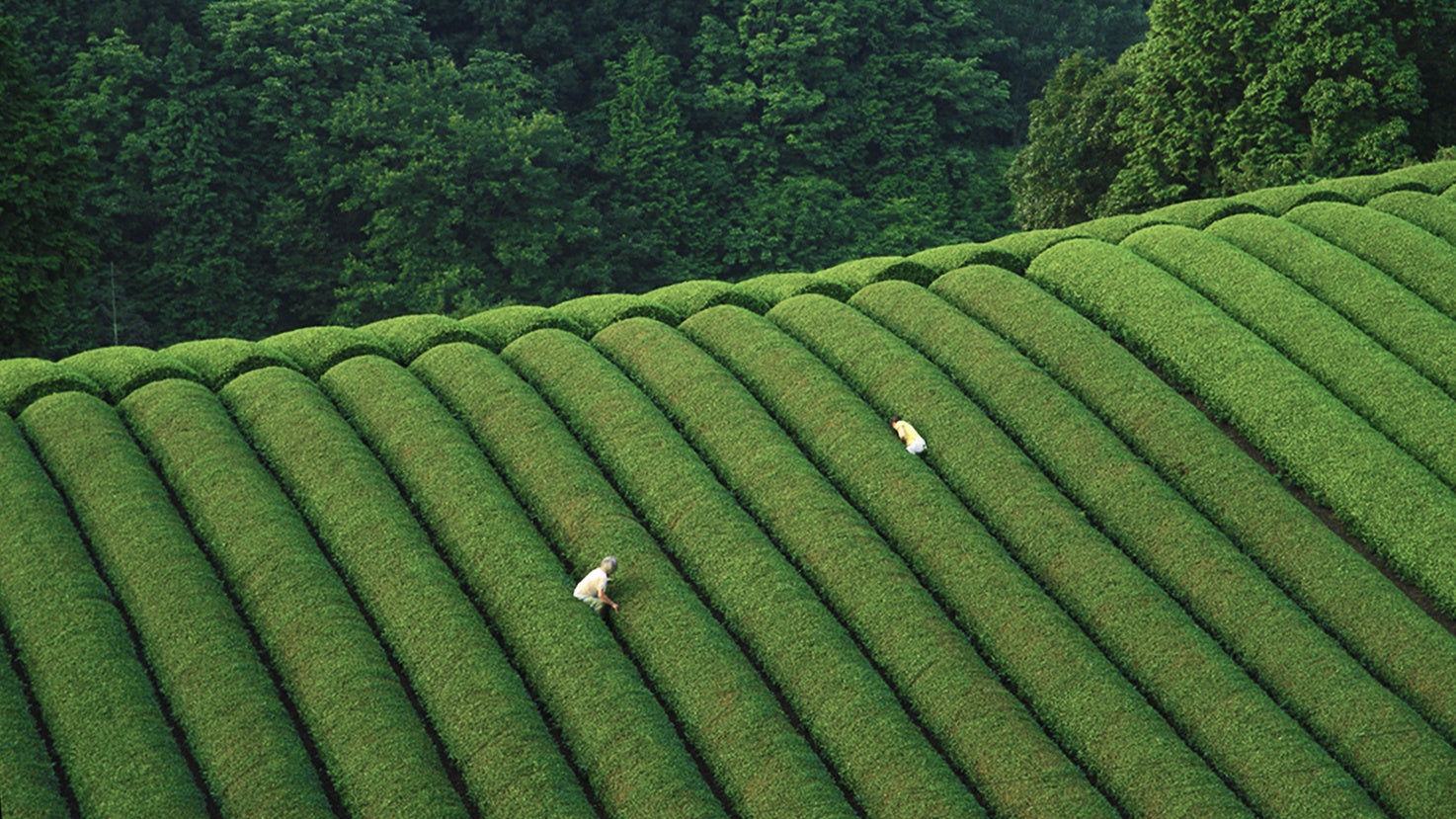Matcha is derived from the same tea plant as all other types of teas — camellia sinensis, whose leaves can be made into green, white, yellow, oolong, black and pu-erh tea. Matcha belongs to the Japanese green tea category, meaning that it’s steamed after being harvested to stop the oxidation process — hence the reason why it retains its brilliant green colour. What makes matcha truly special is its growing style, harvest and production process. It is the conditions under which matcha is grown and produced that contribute to its unique colour, aroma and taste profile.
Growing fine quality matcha has a lot to do with the terroir, or the natural environment in which it is produced, including the soil, topography, and climate (see The Terroirs of Matcha). While there are a few regions in Japan that produce matcha, the region best known for growing its matcha is Uji, on the southeast border of Kyoto, where experienced matcha farmers have mastered the techniques of growing and harvesting the best matcha for over a span of half a millennium (see History of Matcha). All of Matchaeologist’s matcha is produced in Uji (hence the appellation ‘Uji Matcha’), the birthplace and the ‘Holy Land’ of this highly-prized tea.
The shading process begins in April when the first shoots of the season appear on the camellia sinensis plant. Matcha-dedicated tree plantations are then gradually rid of direct sunlight for 30 days using an overhead structure to reduce the rate of photosynthesis. This allows for increased levels of theanine, which is an amino acid responsible for the mellow and sweet-savoury flavour profile of matcha. The darker the condition under which the tea grows, the better the grade of matcha. The highest grades of matcha are grown in almost darkness when it is time for harvesting.
Namacha (raw tea) — steam & dry → Aracha (rough cut tea) — destem & devein → Tencha (final leaf product) — stone-grind → Matcha
The harvest process starts in early May, when the young leaves are delicately handpicked from the tea plants, with the year’s ‘first flush’ — ichibancha (一番茶) considered to be the most superior selection of them all by specialists and connoisseurs. Only the youngest and greenest parts of the plant are harvested to become namacha (生茶) or ‘raw tea’. In order to retain the natural vivid green colour of the leaves alongside their distinct aromas, namacha is steamed for around 15-20 seconds, within 20 hours after being picked.
Post-steaming, the leaves undergo a drying and destemming process to filter out only the finest parts of the leaves to make the finest matcha. Unlike other Japanese loose-leaf green teas that are rolled into twists after the steaming process, the leaves used to make matcha are cooled and dried with an air machine to become aracha (荒茶). Aracha is then deveined and destemmed to become tencha (碾茶).
The final step of the manufacturing process is the grinding of the tencha leaves into a powder form. Using a traditional stone mill made from granite, the tencha is ground into a fine matcha powder that is consumed today. It is this grinding process that gives matcha (抹茶) its name — literally “ground tea”.
The complex and rigorous growing and manufacturing process of matcha is what makes it so unique and highly-prized. We hope that this post has helped enlighten you on the process of growing and producing this spectacular tea and allowed you to appreciate the time and effort that goes into creating the finest artisanal matcha.


